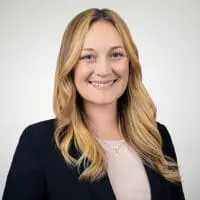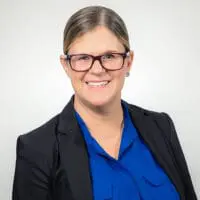Publication
California’s New COVID-19 Supplemental Paid Sick Leave—Senate Bill No. 95
By Gina L. Miller, Tiffanny Brosnan and Ashley R. McLachlan
On March 19, 2021, Governor Newsom signed Senate Bill No. 95 which requires covered employers to provide a new bank of supplemental paid sick leave for certain COVID-19-related reasons. This bill goes into effect 10 days from enactment, on March 29, 2021, and will expire September 30, 20211. This bill is broader in many respects than Assembly Bill No. 1867 which was California’s version of the Families First Coronavirus Response Act (“FFCRA”) and which expired December 31, 2020. Senate Bill No. 95 covers more employers, provides employees more reasons to qualify for supplemental paid sick leave, and may require employers to provide retroactive pay to employees who took unpaid leave for the qualifying reasons on or after January 1, 2021.
Senate Bill No. 95 applies to employers with more than 25 employees, a drastic expansion from now-expired Assembly Bill No. 1867, which applied only to large employers with 500 or more employees. Senate Bill No. 95 adds two new sections to the California Labor Code. Labor Code section 248.2 provides supplemental paid sick leave to “covered employee[s]” who are “unable to work or telework for an employer” for specified COVID-19-related reasons. Additionally, the bill adds Labor Code section 248.3 to provide supplemental paid sick leave to in-home supportive service providers. For the purposes of this legal alert, highlighted below are provisions applicable to covered employees unable to work or telework for qualifying COVID-19 related reasons.2
Amount of Supplemental Paid Sick Leave
Senate Bill No. 95 creates a new bank of leave which an employer shall make available upon the oral or written request of a covered employee. Senate Bill No. 95 provides the following amount of COVID-19 supplemental paid sick leave:
- Full-time workers or those scheduled to work on average at least 40 hours per week in the two preceding weeks before they received the leave, are entitled to 80 hours of supplemental paid sick leave.
- Part-time workers are entitled to varying leave amounts to be determined based on the hours worked. If the employee has a normal weekly schedule, he or she is entitled to the total number of hours the covered employee is normally scheduled to work for the employer over two weeks. If the employee works a variable number of hours, he or she is entitled to 14 times the average number of hours the covered employee worked each day for the employer in the six months preceding the date the employee took COVID-19 supplemental paid sick leave. If the employee has worked for the employer over a period of fewer than six months but more than 14 days, the amount of pay is instead calculated over the entire period the employee has worked for the employer. Finally, if the employee works a variable number of hours and has worked for the employer over a period of 14 days or fewer, he or she is entitled to the total number of hours the employee has worked for that employer.
Qualifying Reasons for Supplemental Paid Sick Leave
Senate Bill No. 95 provides several reasons for supplemental paid sick leave that differ from Assembly Bill No. 1867, but which are similar to Congress’ recent FFCRA expansion under the American Rescue Plan Act of 2021 (“ARPA”). Now, a covered employee who is unable to work or telework is entitled to COVID-19 supplemental paid sick leave if:
- The employee is subject to a quarantine or isolation period
- The employee has been advised by a healthcare provider to self-quarantine due to concerns related to COVID-19
- The employee is attending an appointment to receive a vaccine for protection against contracting COVID-19
- The employee is experiencing symptoms related to a COVID-19 vaccine that prevent the employee from being able to work or telework
- The employee is experiencing symptoms of COVID-19 and seeking a medical diagnosis
- The employee is caring for a family member who is subject to a quarantine or isolation period or who has been advised to self-quarantine
- The employee is caring for a child, whose school or place of care is closed or otherwise unavailable for reasons related to COVID-19 on the premises
Rate of Pay for Supplemental Paid Sick Leave
For exempt employees, the supplemental paid sick leave is to be calculated in the same manner as the employer calculates wages for other forms of paid leave time. For nonexempt employees, supplemental paid sick leave is to be paid at the highest of the following:
- A rate calculated in the same manner as the regular rate of pay for the workweek in which the covered employee uses COVID-19 supplemental paid sick leave, whether or not the employee actually works overtime in that workweek
- A rate calculated by dividing the covered employee’s total wages, not including overtime premium pay, by the employee’s total hours worked in the full pay periods of the prior 90 days of employment
- The state minimum wage
- The local minimum wage to which the covered employee is entitled
Retroactive Pay
To “protect the economic well-being of covered employees who took leave” for the qualifying COVID-19 reasons on or after January 1, 2021, obligations to provide supplemental paid sick leave shall apply retroactively to January 1, 2021.
Upon request, either oral or written, employers are to provide retroactive compensation for any unpaid leave (or leave not compensated “equal to or greater than” the required compensation amount) taken on or after January 1, 2021 for any of the qualifying reasons. These retroactive payments will count toward the total allotment employers are obligated to provide and must be paid on or before the payday for the next full pay period after the employee’s request. This payment must also be reflected in that employee’s wage statement for that pay period.
Notice & Wage Statement Requirements
Employers are required to provide notice of these new supplemental leave entitlements to employees. To aid in this requirement, the Labor Commissioner has been instructed to release model notices within seven days of enactment.
Additionally, the available COVID-19 supplemental paid sick leave must be reflected on employee’s wage statements. Notice of available COVID-19 supplemental paid sick leave must be provided for on a separate line distinct from regularly available sick pay. Special instructions have been provided for part-time employee’s wage statements.
These wage statement requirements are not enforceable until the next full pay period following enactment.
Interactions with Other Leaves and Laws
Other Leaves
Senate Bill No. 95 provides that the total amount of COVID-19 supplemental paid sick leave an employee is eligible for is in addition to regularly provided paid sick leave. Moreover, employers are prohibited from requiring that employees use any other unpaid or paid leave, PTO, or vacation time before the employee can use COVID-19 supplemental paid sick leave or in lieu of COVID-19 supplemental paid sick leave.
FFCRA, ARPA, and Other Local Ordinances
Employers who already provide COVID-19 supplemental paid sick leave voluntarily under the FFCRA or pursuant to a local ordinance may be in luck. An employer may credit other supplemental paid leave provided to an employee since January 1, 2021 for the same qualifying reasons, toward COVID-19 supplemental paid leave in some circumstances. Again, regularly provided paid sick leave under Labor Code section 246 and supplemental paid sick leaves under Assembly Bill No. 1867 may not be credited toward COVID-19 supplemental paid leave.
Cal-OSHA
In November Cal-OSHA adopted certain emergency standards which provided that employers are to maintain an employee’s earnings when an employee is excluded from the workplace due to COVID-19, subject to some exceptions. Under Senate Bill No. 95 an employer may require employees to first exhaust COVID-19 supplemental paid sick leave “in order to satisfy the requirement to maintain an employee’s earnings when an employee is excluded from the workplace due to COVID-19 exposure under the Cal-OSHA.”
Final Thoughts
Many questions remain. How will such provisions affect former employees who may have taken unpaid leave for one of the qualifying reasons but ended their employment relationship before March 29, 2021? What are an employer’s obligations to such former employees? How should employers confirm that a prior unpaid leave was taken for one of the proscribed qualifying reasons?
Labor Commissioner guidance will be invaluable as employers seek to implement these new provisions. View the COVID-19 Supplemental Sick Leave FAQ issued by the Labor Commissioner.
Footnotes
-
Full text of SB 95 is available here: https://leginfo.legislature.ca.gov/faces/billTextClient.xhtml?bill_id=202120220SB95
-
This legal alert does not address the special rules for firefighters or the provisions of Labor Code section 248.3, applicable to in-home supportive services.
About Snell & Wilmer
Founded in 1938, Snell & Wilmer is a full-service business law firm with more than 500 attorneys practicing in 17 locations throughout the United States and in Mexico, including Los Angeles, Orange County, Palo Alto and San Diego, California; Phoenix and Tucson, Arizona; Denver, Colorado; Washington, D.C.; Boise, Idaho; Las Vegas and Reno, Nevada; Albuquerque, New Mexico; Portland, Oregon; Dallas, Texas; Salt Lake City, Utah; Seattle, Washington; and Los Cabos, Mexico. The firm represents clients ranging from large, publicly traded corporations to small businesses, individuals and entrepreneurs. For more information, visit swlaw.com.



